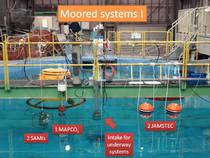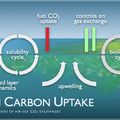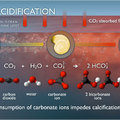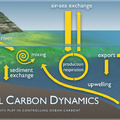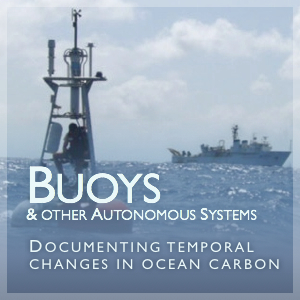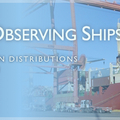Surface CO2 Methods Standardization and Coordination
Working with the international community to improve measurement quality
The PMEL carbon group is working with the international scientific community through the International Ocean Carbon Coordination Project (IOCCP) to improve the quality of surface ocean carbon measurements.
One way we have working to improve quality has been by helping to develop guides to best practices:
- Guide to Best Practices for Oceanic CO2 Measurements - A.G. Dickson, C. Sabine, and J. Christian, eds., PICES Series Publication 3, IOCCP Report No. 8, 191 pp.
- Guide to Best Practices for ocean acidification research and data reporting - U. Riebesell, V. J. Fabry, L. Hansson, and J.-P. Gattuso J.-P. (Eds.), 2010, 260 p. Luxembourg: Publications Office of the European Union.
We have also helped organize and participated in several methods comparison exercises:
The 2010 Alliance for Coastal Technology (ACT) moored CO2 demonstration project evaluated four commercial pCO2 instruments (PMEL MAPCO2/Battelle Seaology pCO2, Contros HydroC/CO2, Sunburst SAMI-CO2, Pro-Oceanus Systems PSI CO2-Pro) that are capable of being moored for weeks to months. The ACT demonstration projects are designed to characterize performance of relatively new and promising instruments for applications in coastal science, coastal resource management and ocean observing. For more information please visit: www.act-us.info.
NIES-JAMSTEC sponsored pCO2 intercomparison experiment. The experiment was run between 27 February and 4 March 2009 at the National Research Institute for Fisheries Engineering near Tokyo. A large seawater pool was used to manipulate the pCO2 of seawater and supply underway and moored systems. Experiments were run over a range of pCO2 values often encountered in the open ocean (about 280, 360 and 440 μatm). A range of experiments were used to assess the accuracy, drift, and response times of the various systems, relative to an NIES system. Preliminary information about the experiment can be found in the IOCCP Surface Ocean CO2 Atlas Project Pacific Regional Workshop report. The final evaluation report is in preparation and should be released shortly.
The NEIS 2003 pCO2 Intercomparison Experiment was carried out over 5 days from March 10-14, 2003 in a pool located at the National Research Institute of Fishery Engineering, Hazaki, Japan, that contained 170,000 liters of coastal seawater adjusted to a salinity of 33. The instruments were run during the night, xCO2 was calculated, and results were compiled by a data manager and compared and discussed in the afternoon. The pCO2 levels in the pool were adjusted using NaOH or HCl. NIES provided calibration gases with concentrations of: 271.33, 329.72, 390.11, and 449.85 ppm. In addition, NIES supplied dry air and CO2-free gas, which was used as a reference gas .More information on the experiment can be found in the IOCCP Ocean Surface pCO2, Data Integration and Database Development Report.
A shipboard intercomparison exercise was conducted on the R/V Meteor as described by Körtzinger, A., H. Thomas, B. Schneider, N. Gronau, L. Mintrop and J.C. Duinker, 1996. At-sea intercomparison of two newly designed underway pCO2 systems– encouraging results. Marine Chemistry 52: 122-145.

